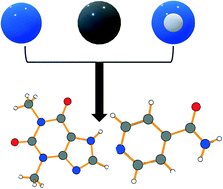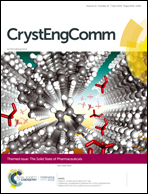Ball size or ball mass – what matters in organic mechanochemical synthesis?
Abstract
Ball mass is an important parameter that is known to have an influence on the outcome of a mechanochemical reaction induced by ball-milling. A standard way of modifying the ball mass is to change the size of the ball made of the same material. In this case, however, a change in mass is accompanied by a simulatneous change in the ball size. It is therefore not possible to disentangle the effects of mass and surface area in these cases. In the present work we report the results of experiments with specially designed and manufactured balls in which (1) milling ball mass is held constant, but their size differs, and (2) the ball mass is altered, with the diameter of the milling ball being held constant. Using the cocrystallisation of theophylline + nicotinamide as a case study it was found that both diameter and ball mass play crucial roles in determining the rate of a mechanochemical reaction. For comparison, we have also used milling balls with the same size (different mass), and others with the same mass (different size) made of different materials, as would be “traditional”. It was found that, despite having the same size, the lightest milling ball (nylon) was the most efficient in initiating the co-crystallisation, presumably due to the sorption of EtOH. Hence, the results of this manuscript also demonstrate how milling ball material can in fact be the most influential parameter, and potentially counterintuitive to classical mechanics.

- This article is part of the themed collections: Editor’s Collection: Mechanochemistry and The Solid State of Pharmaceuticals


 Please wait while we load your content...
Please wait while we load your content...